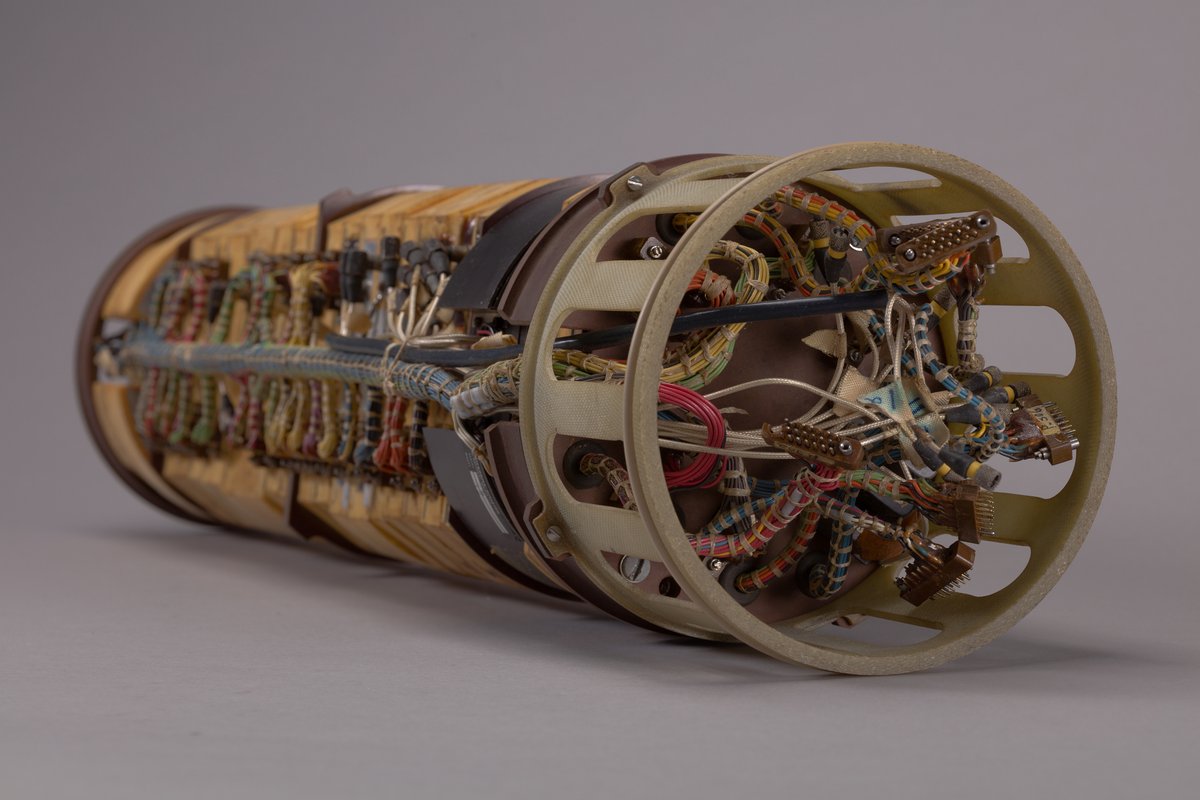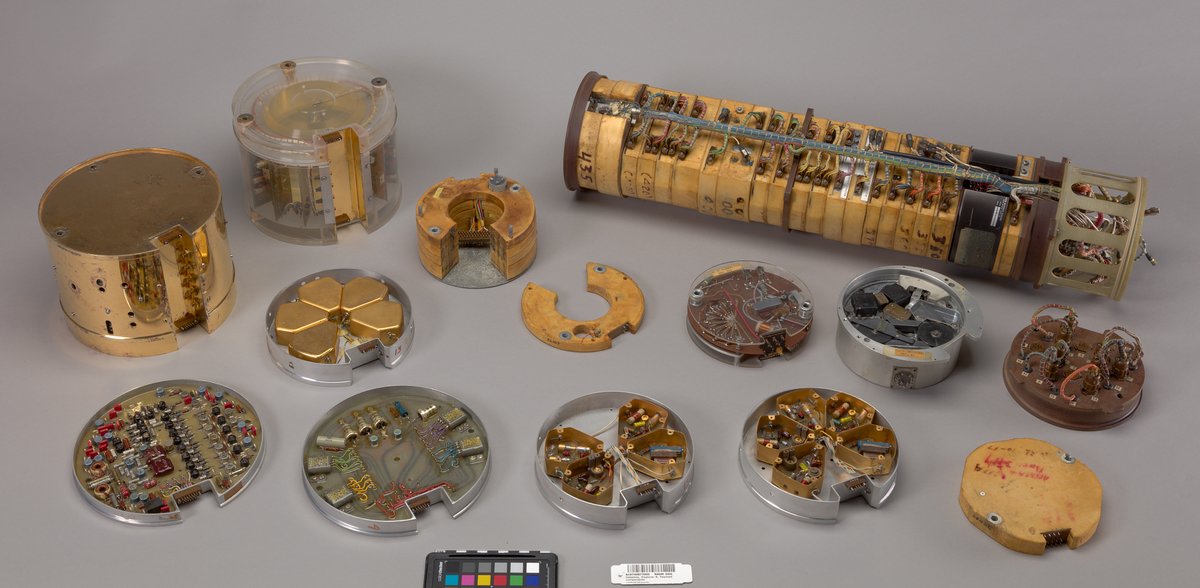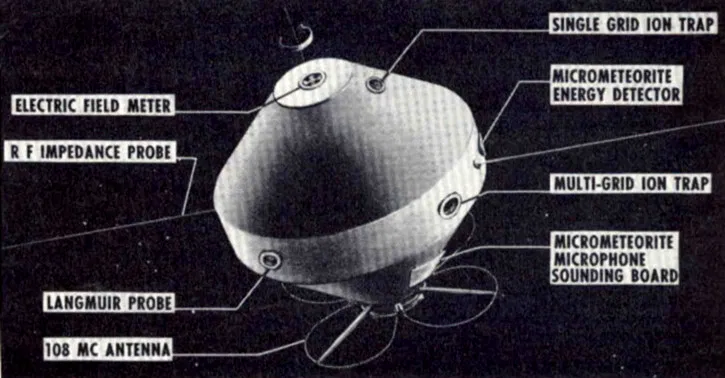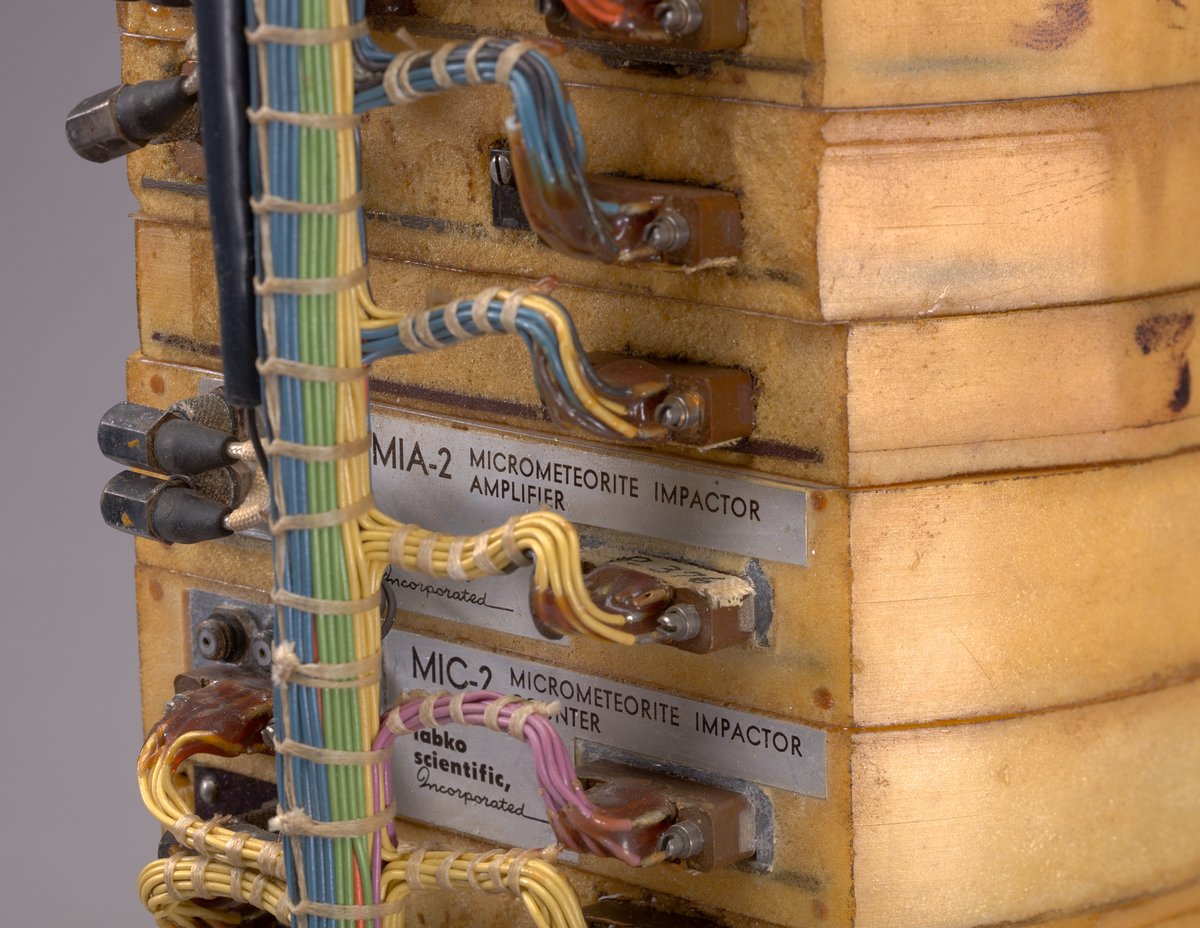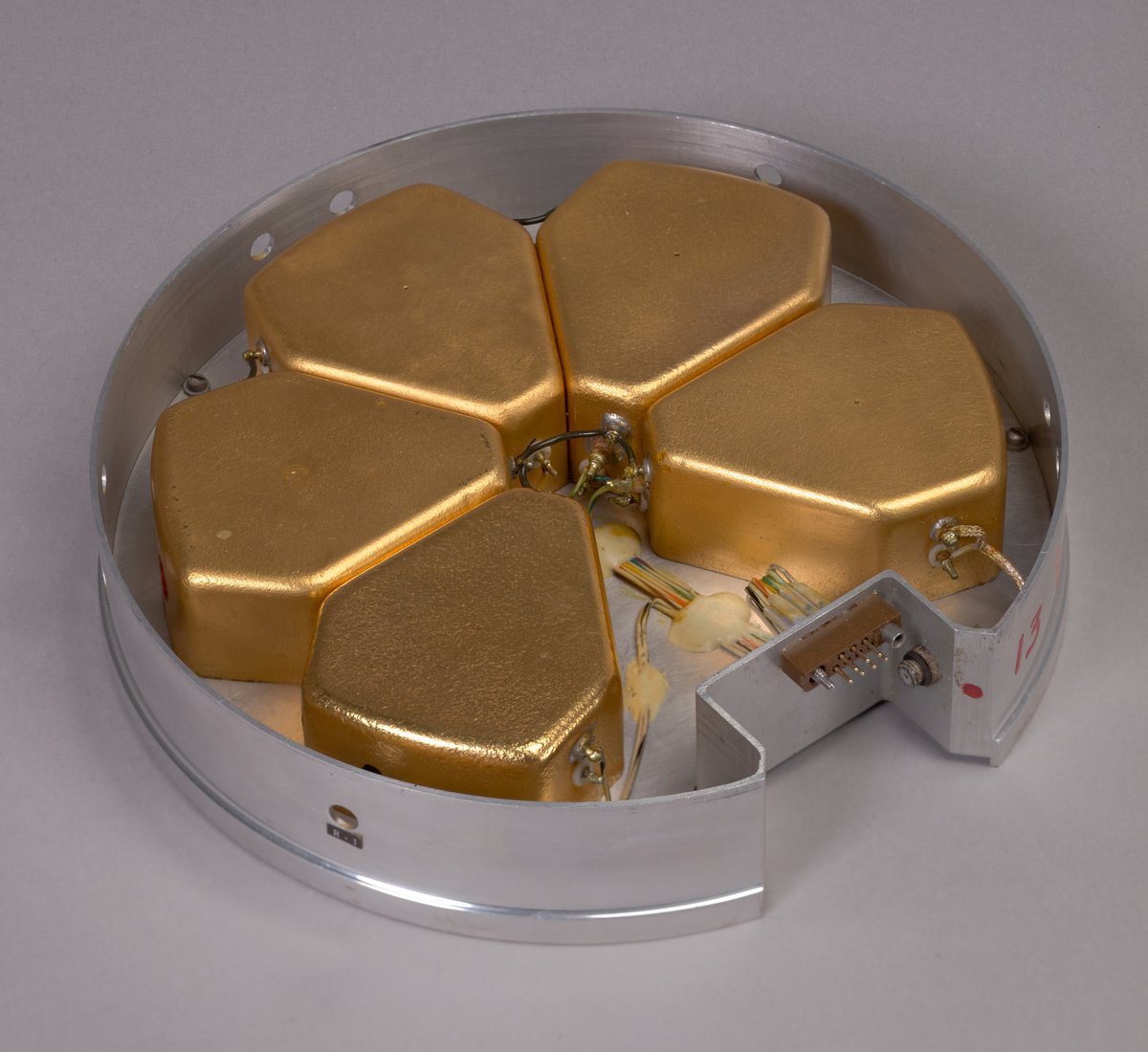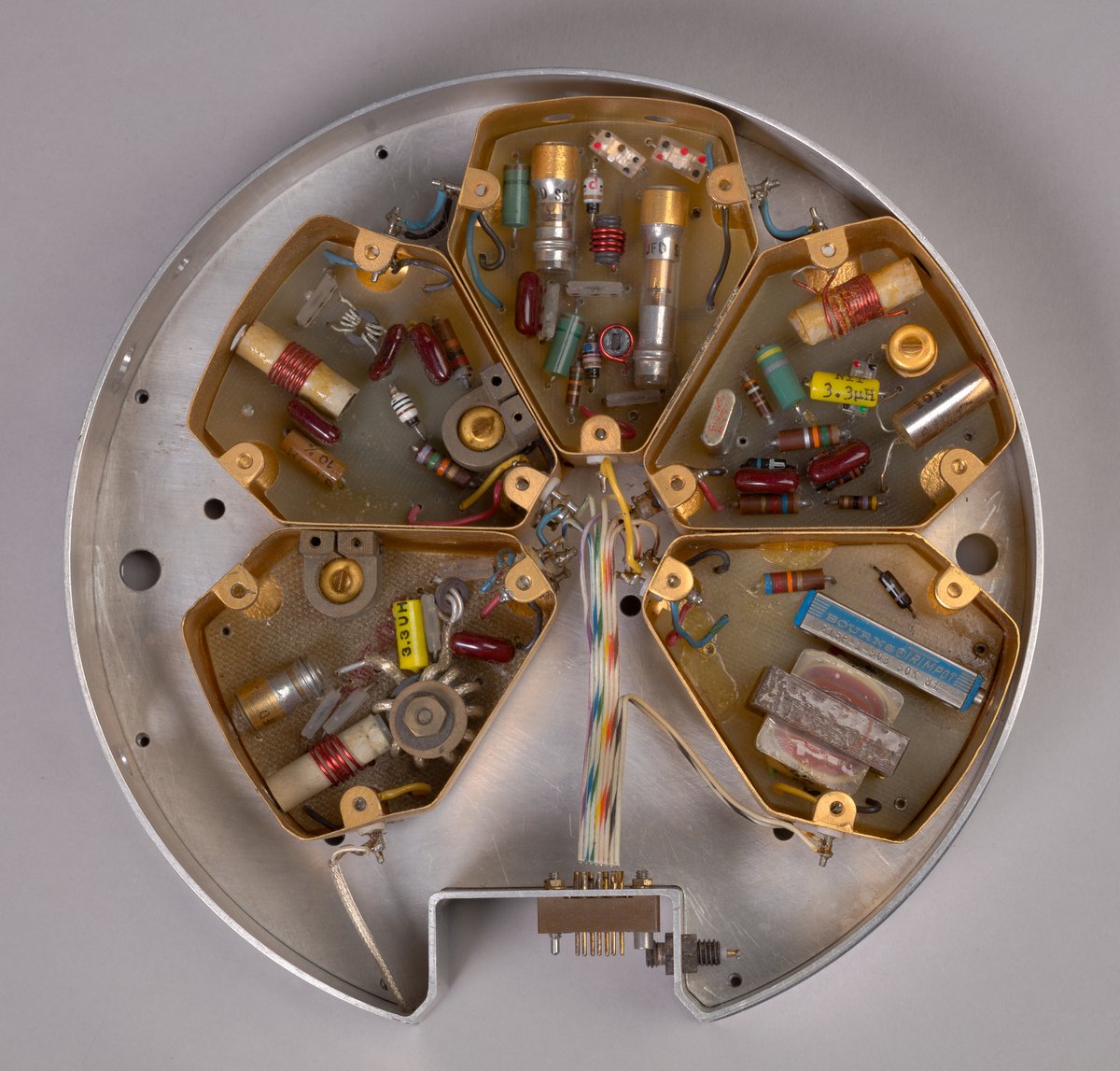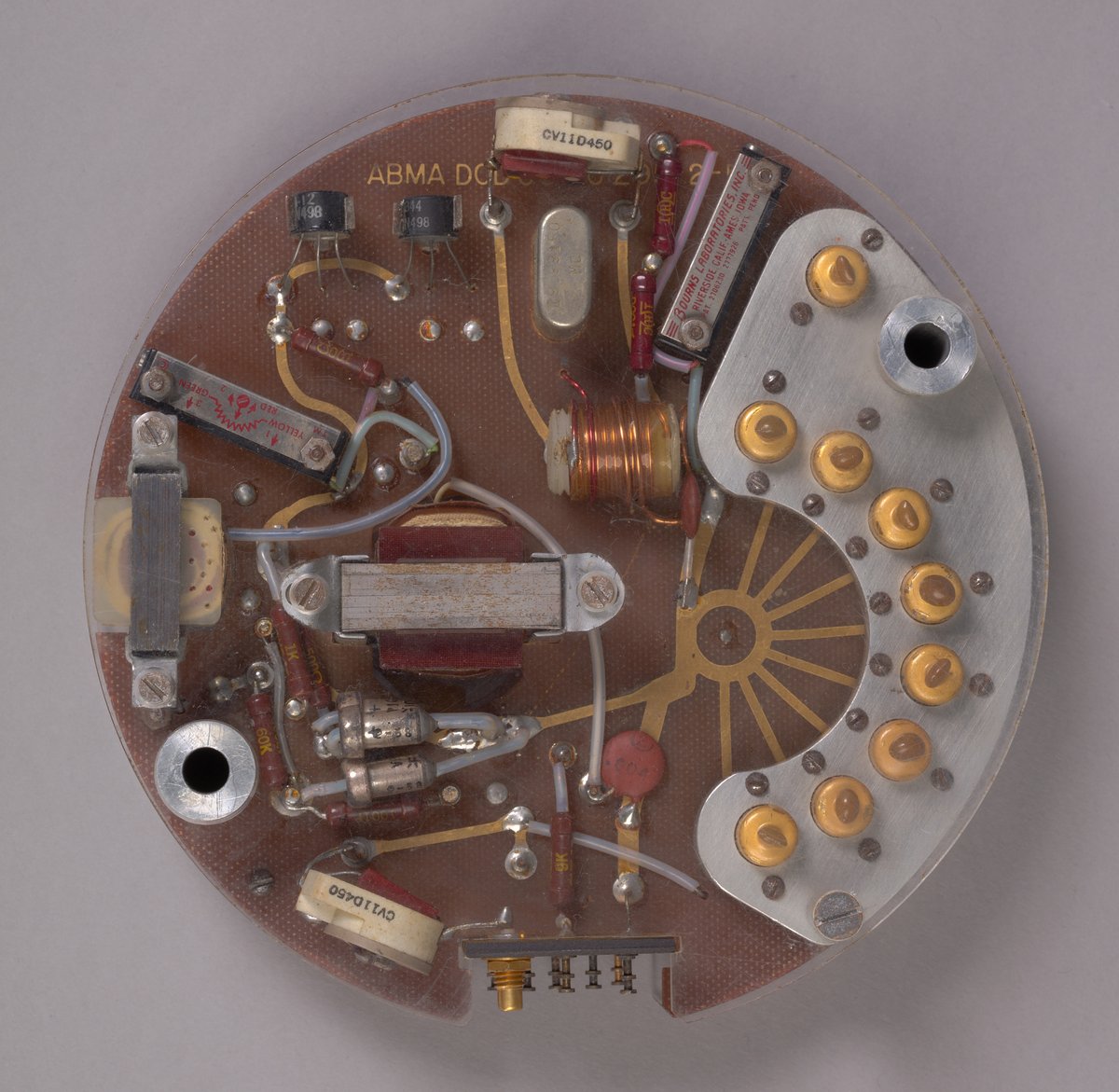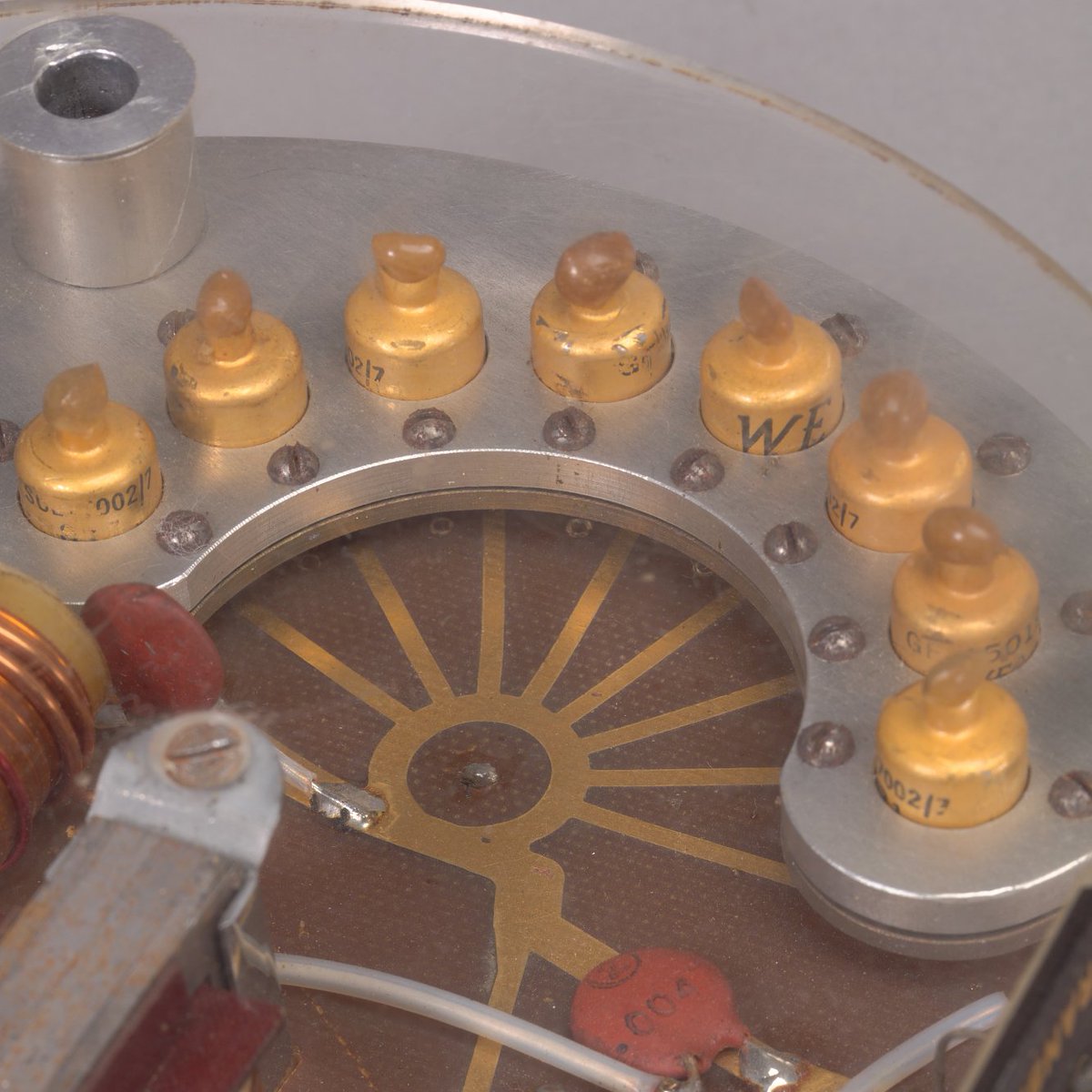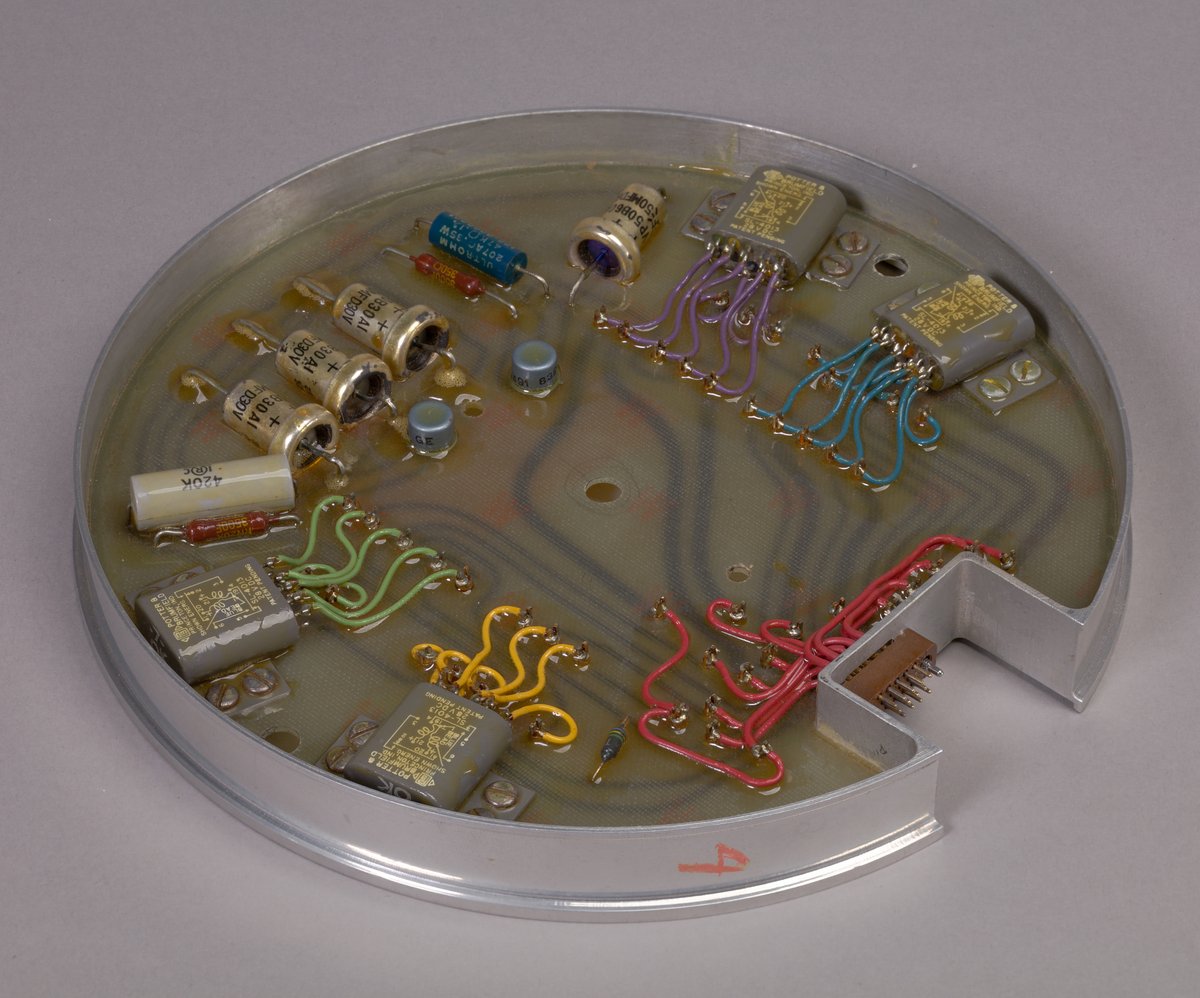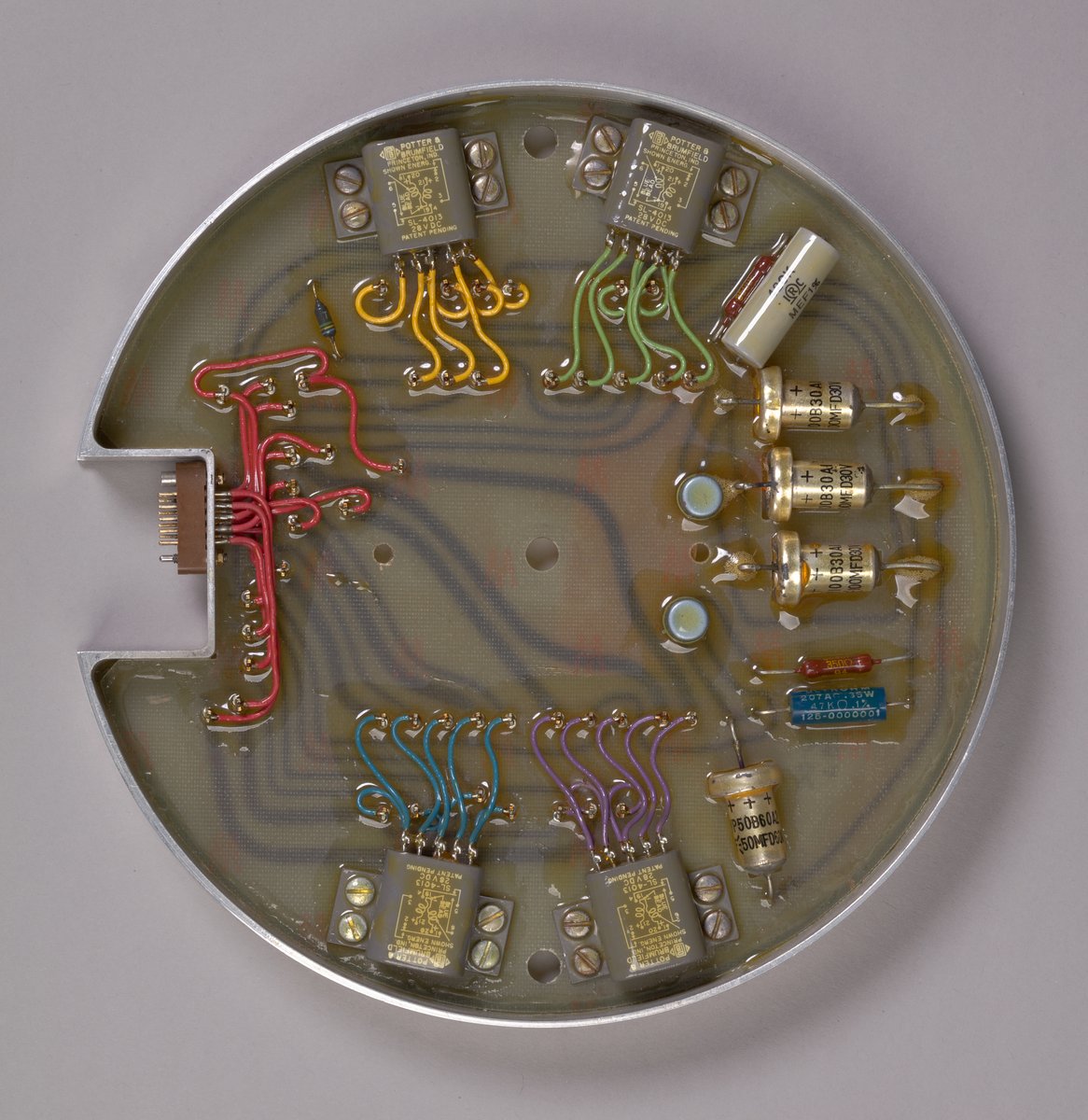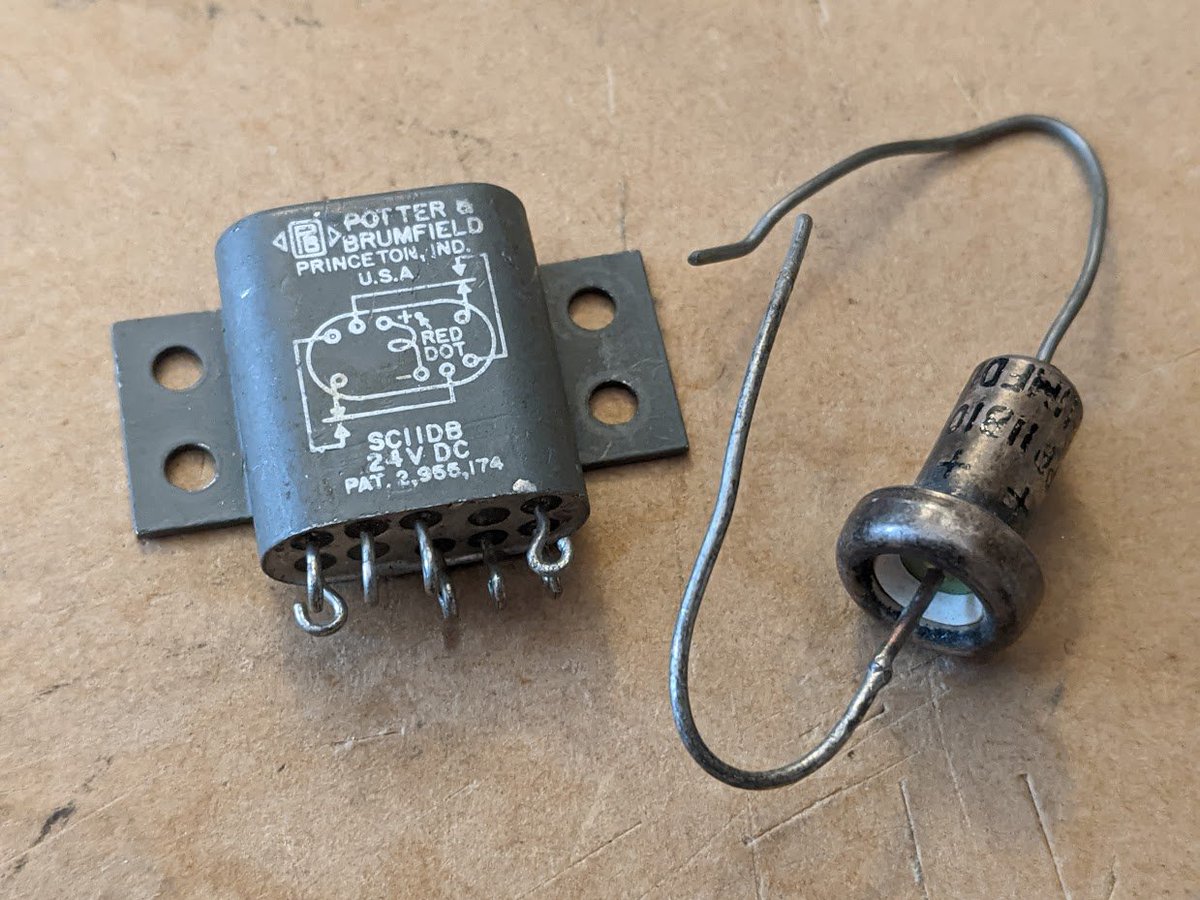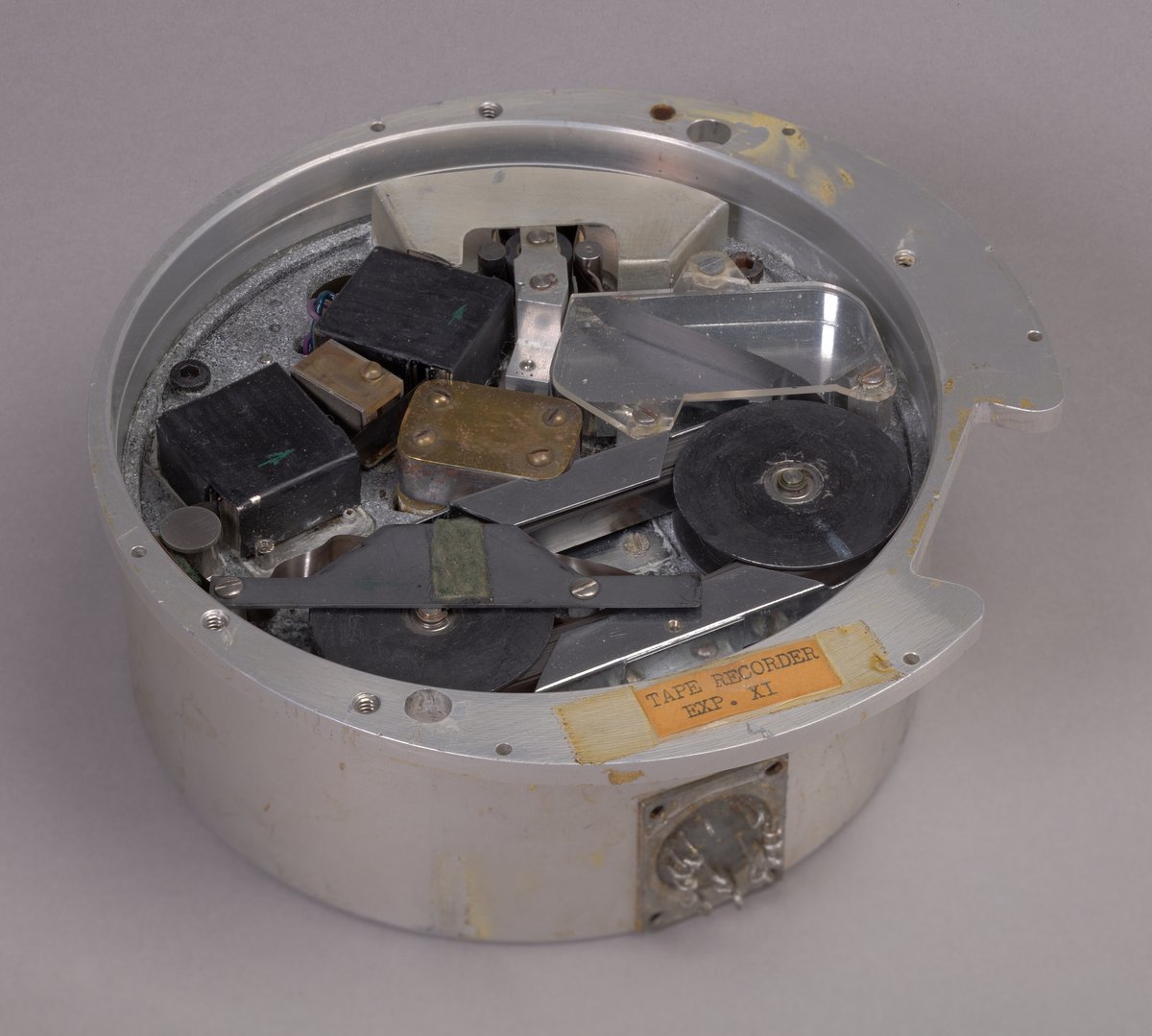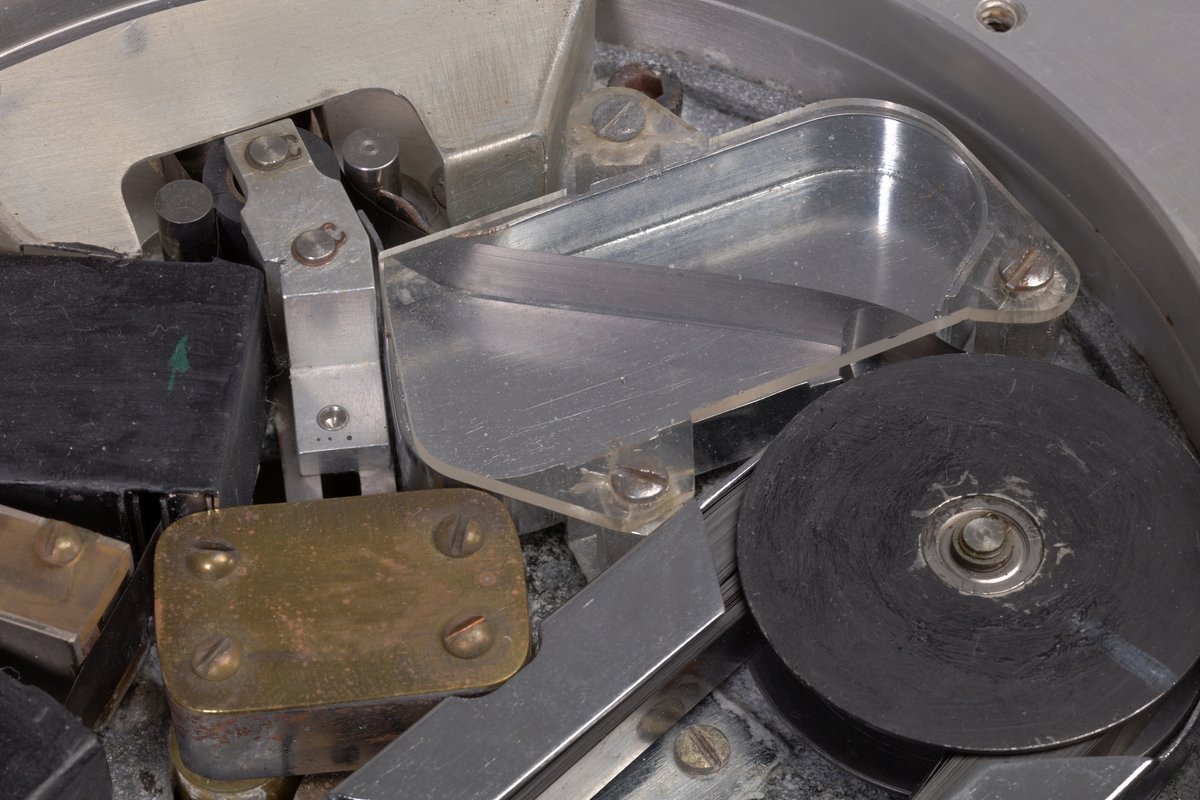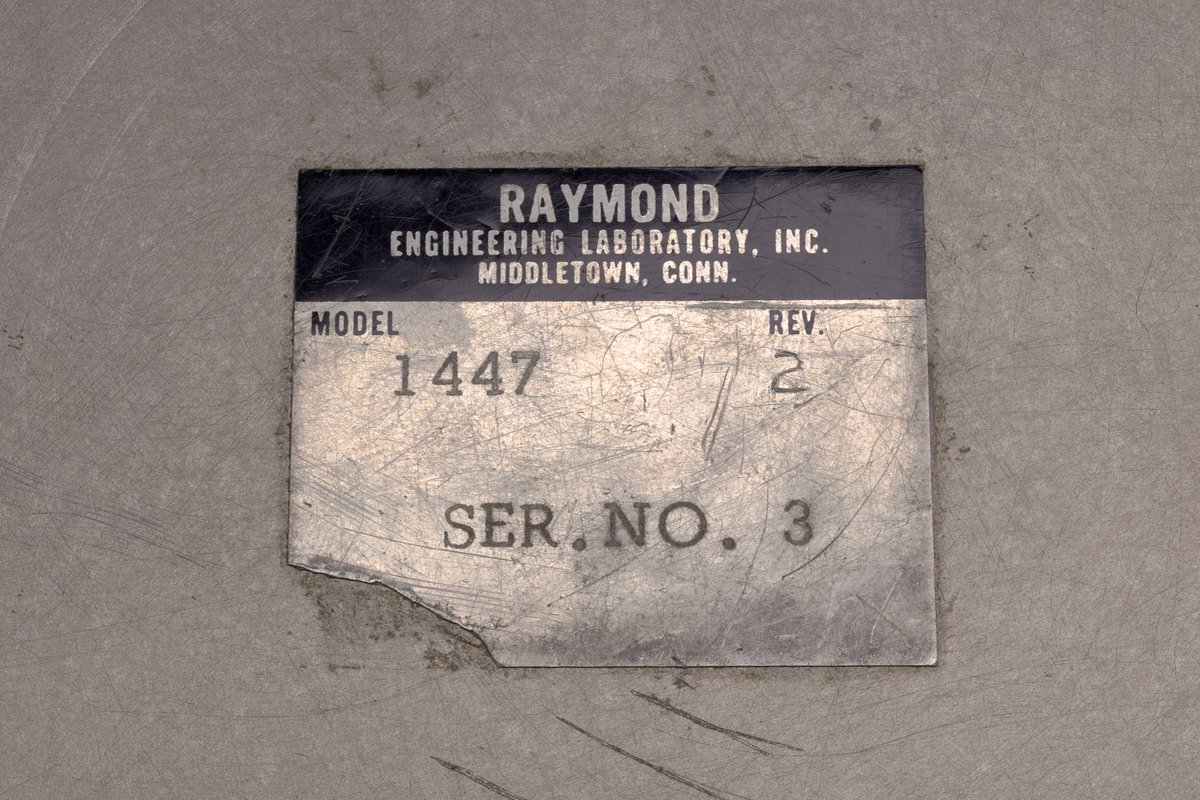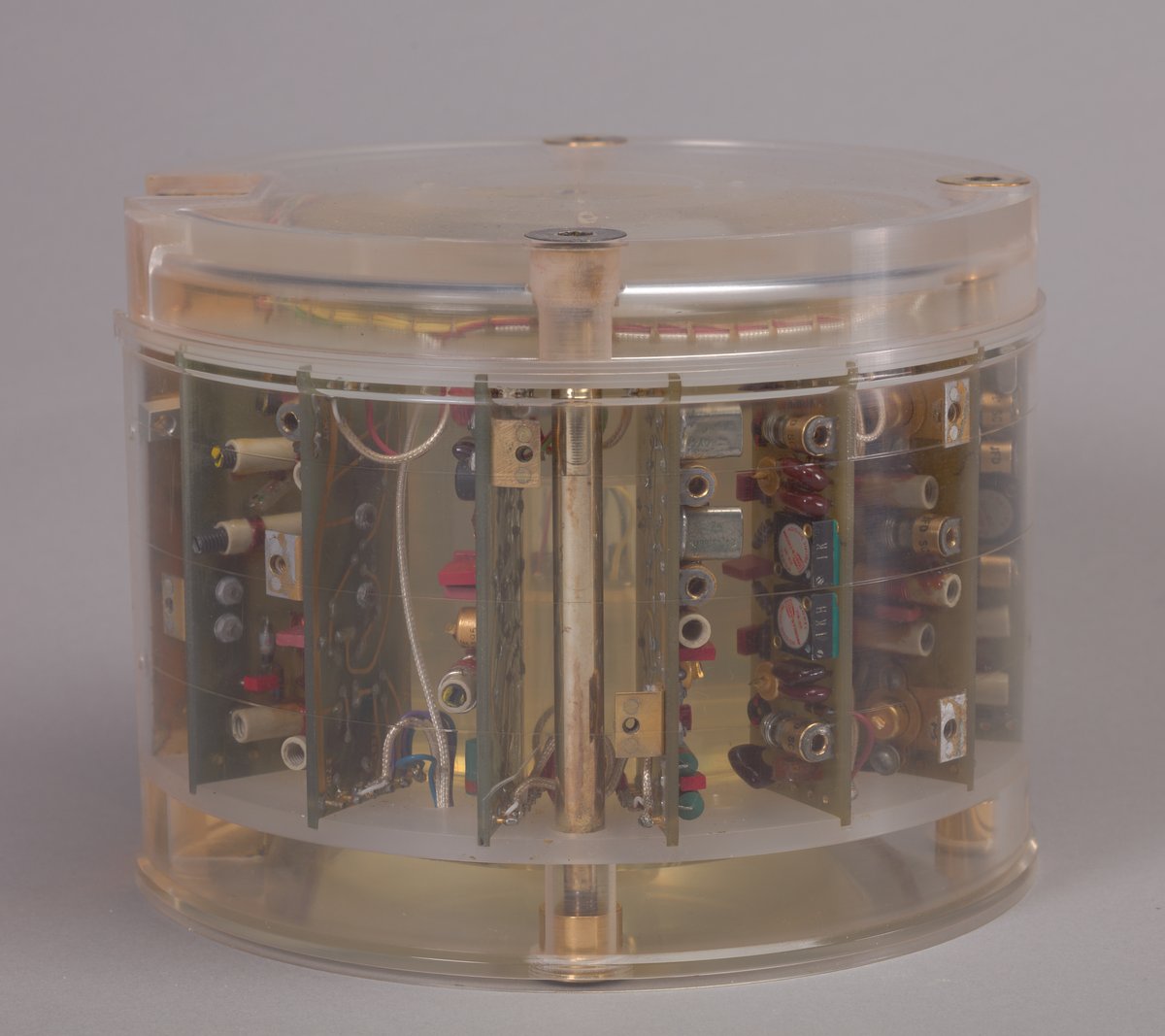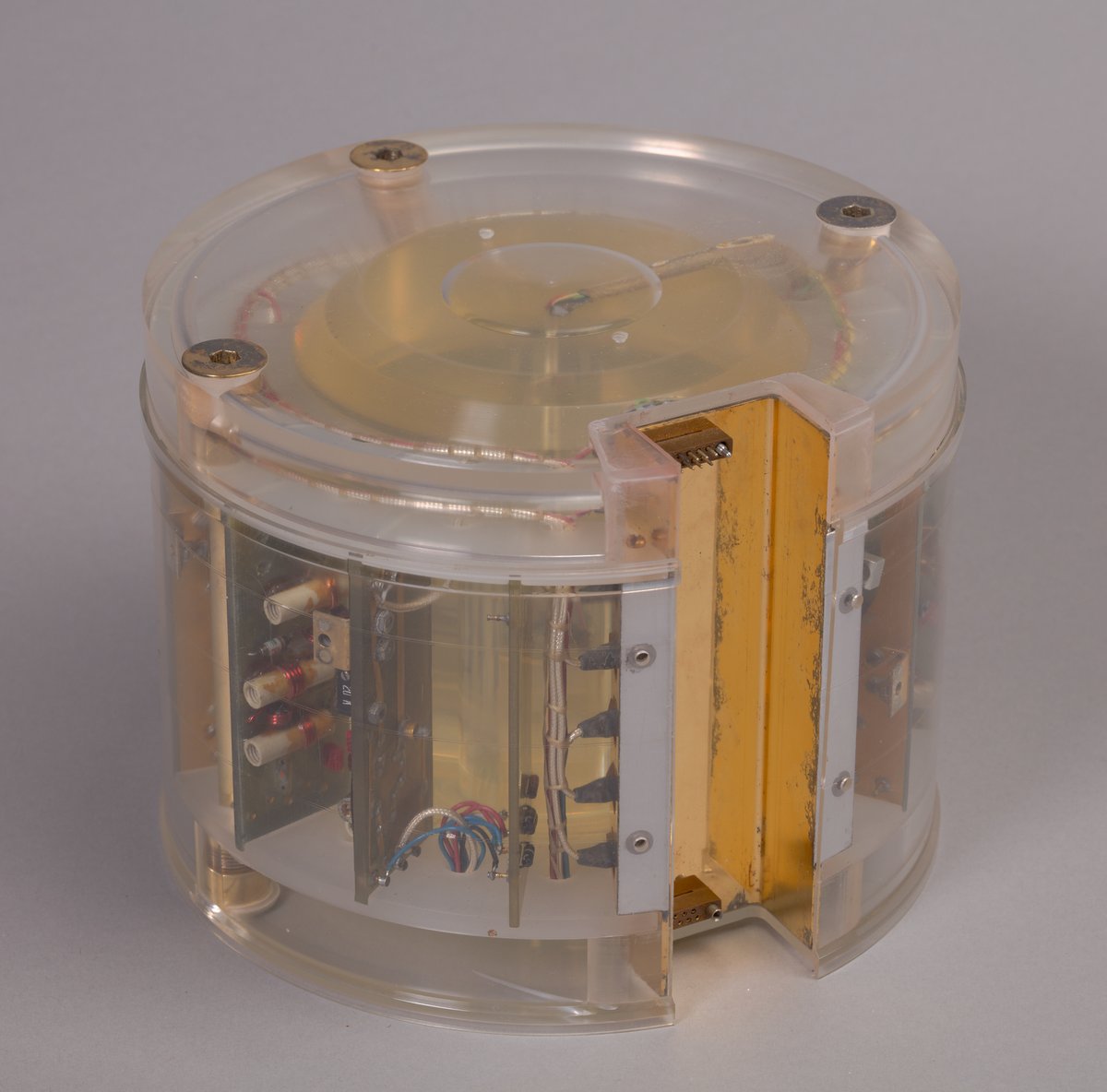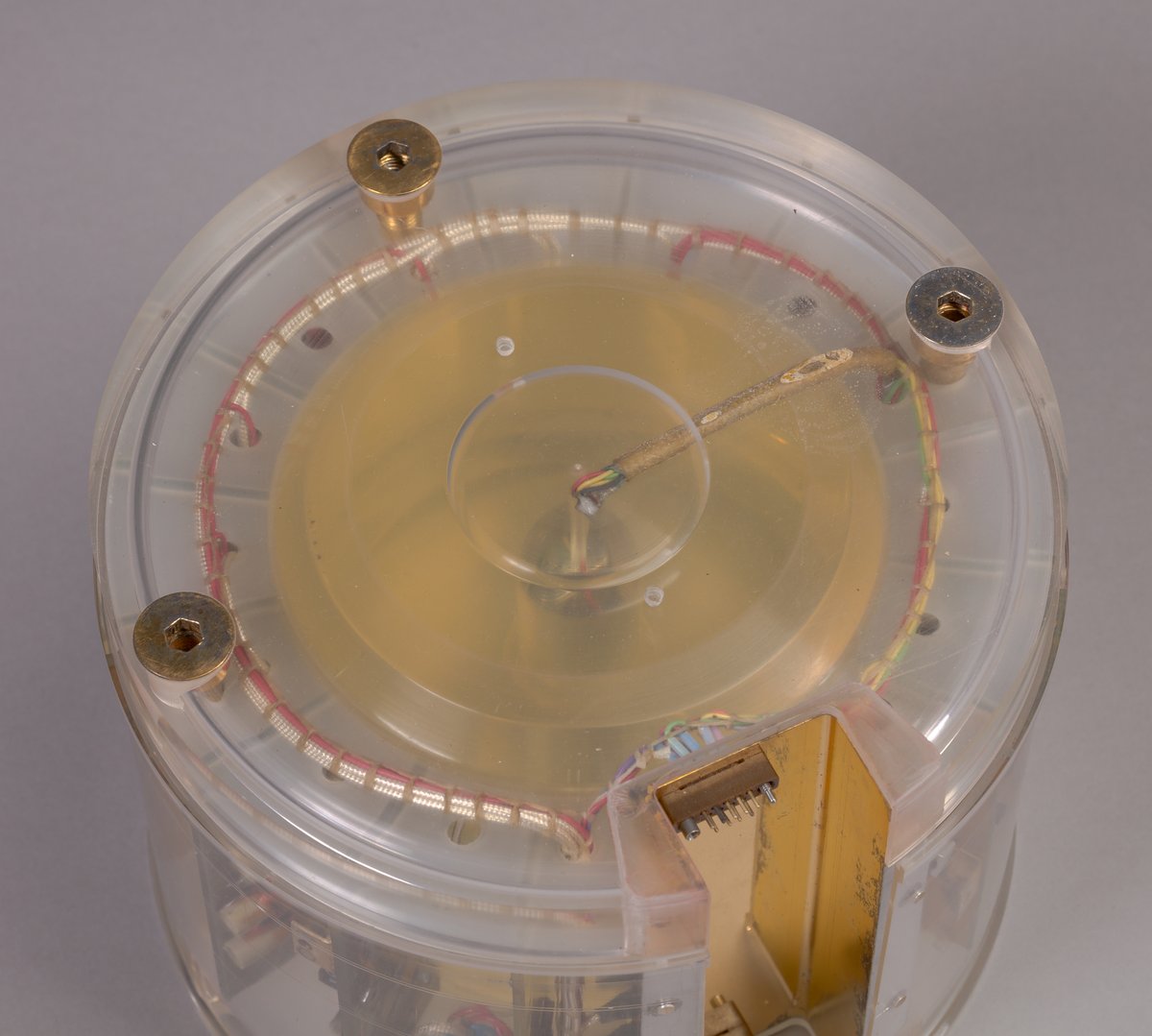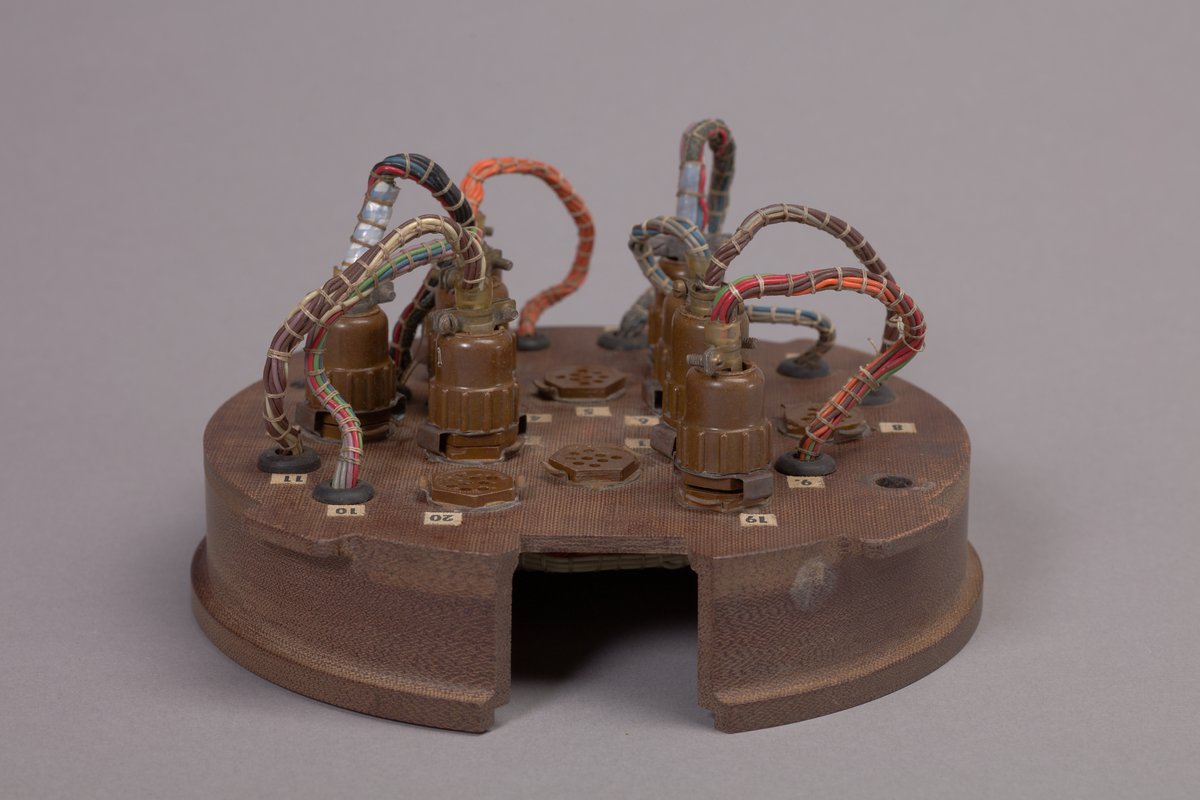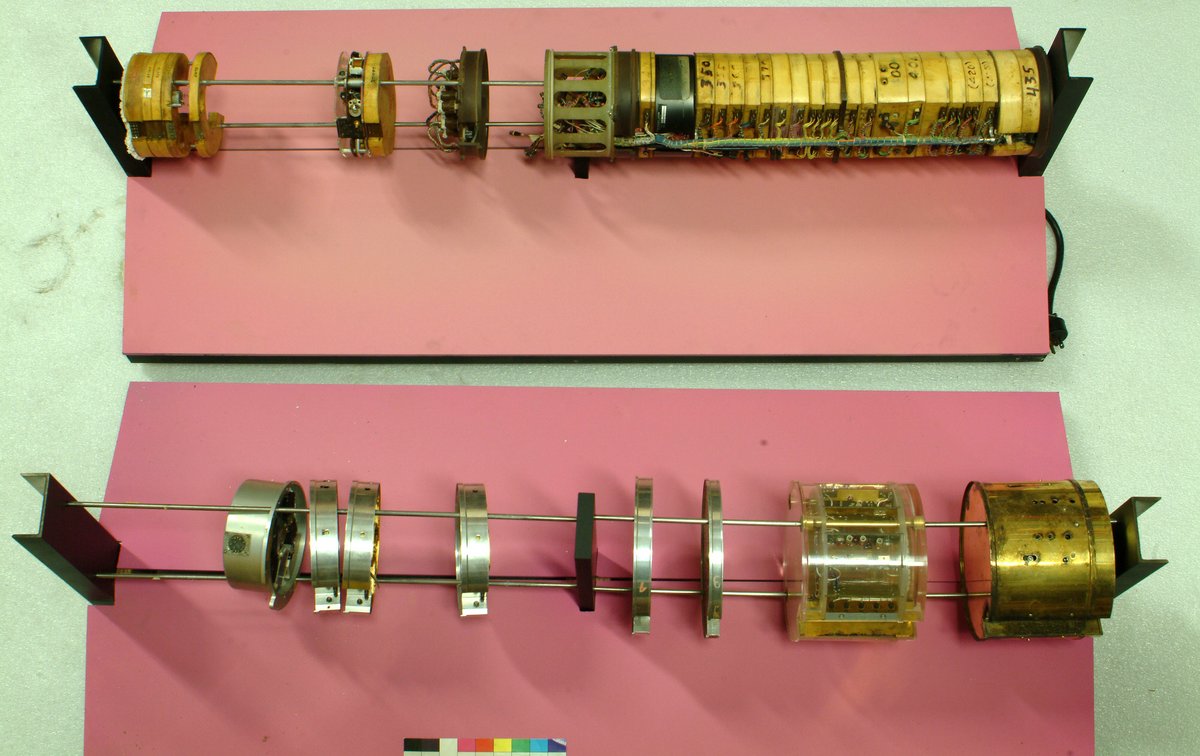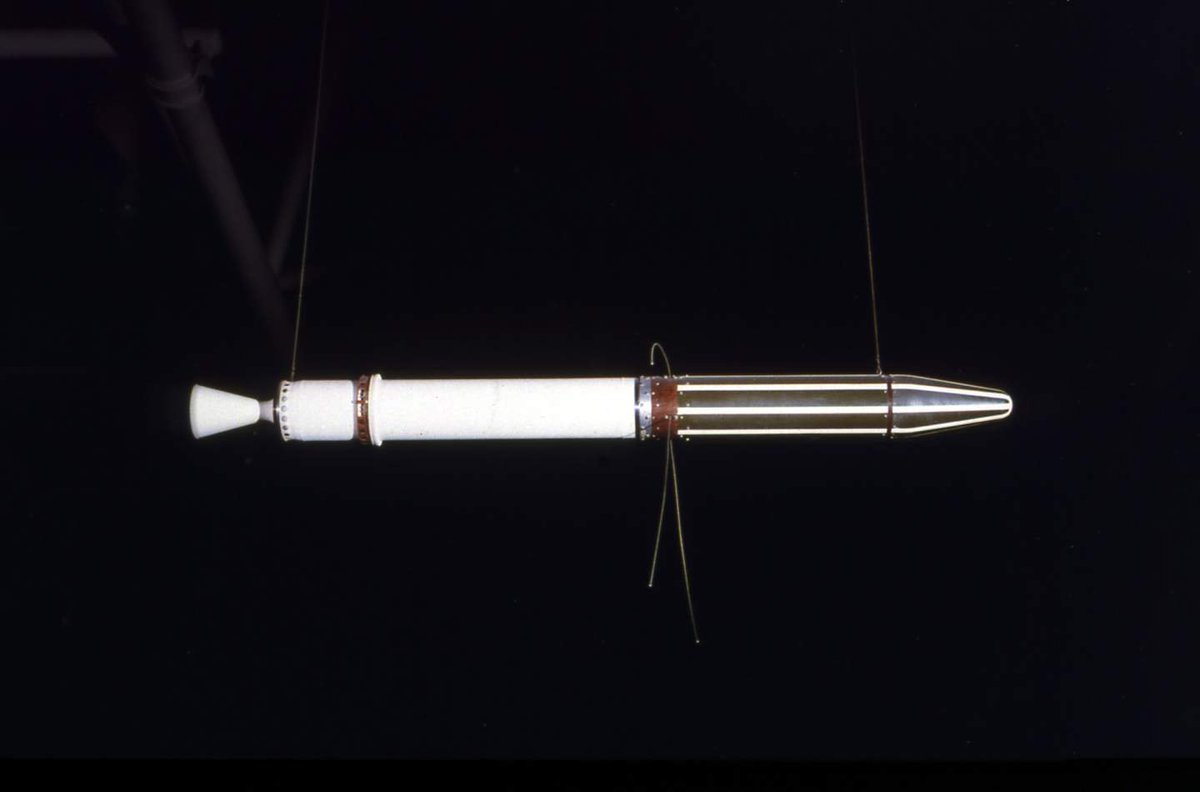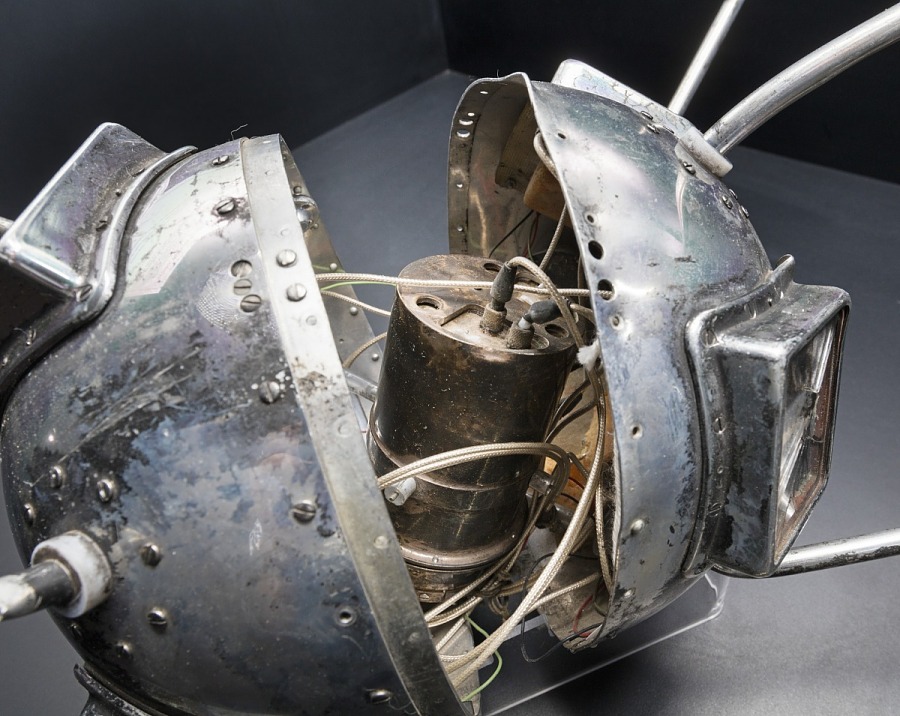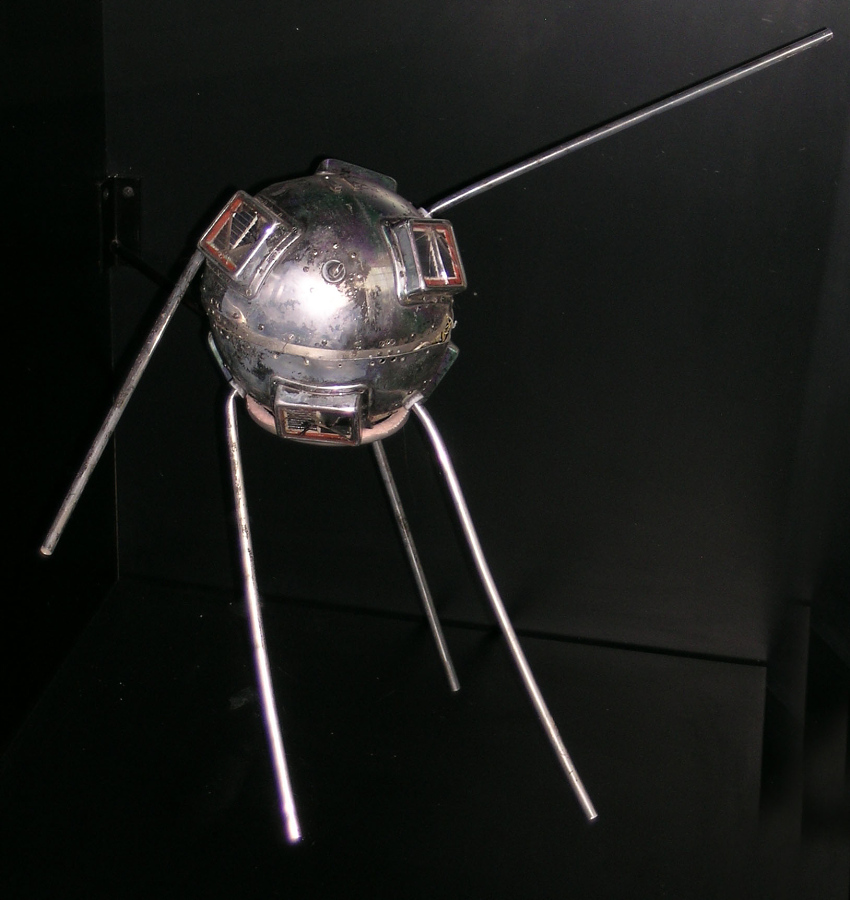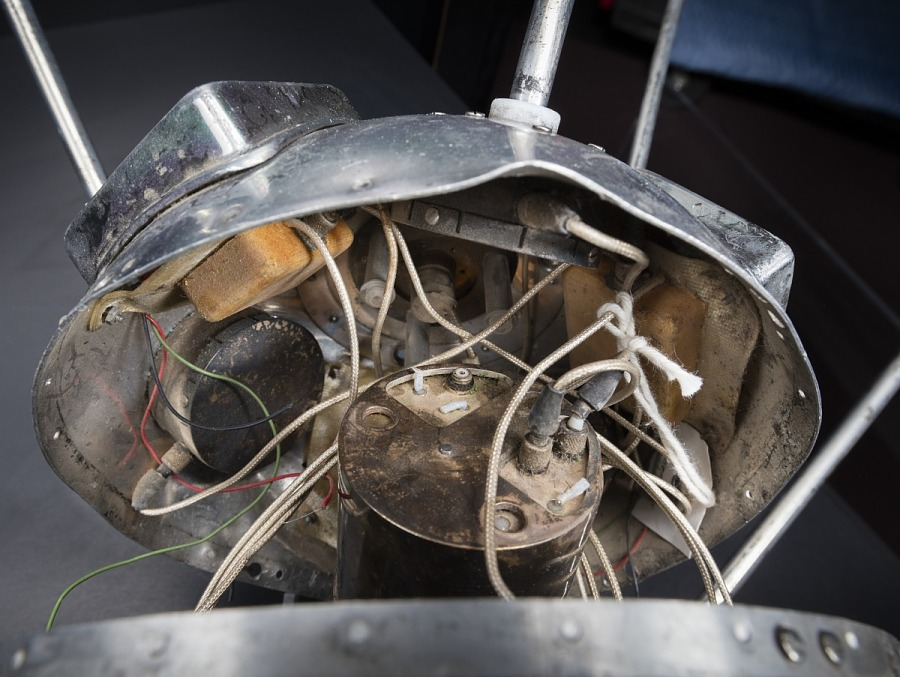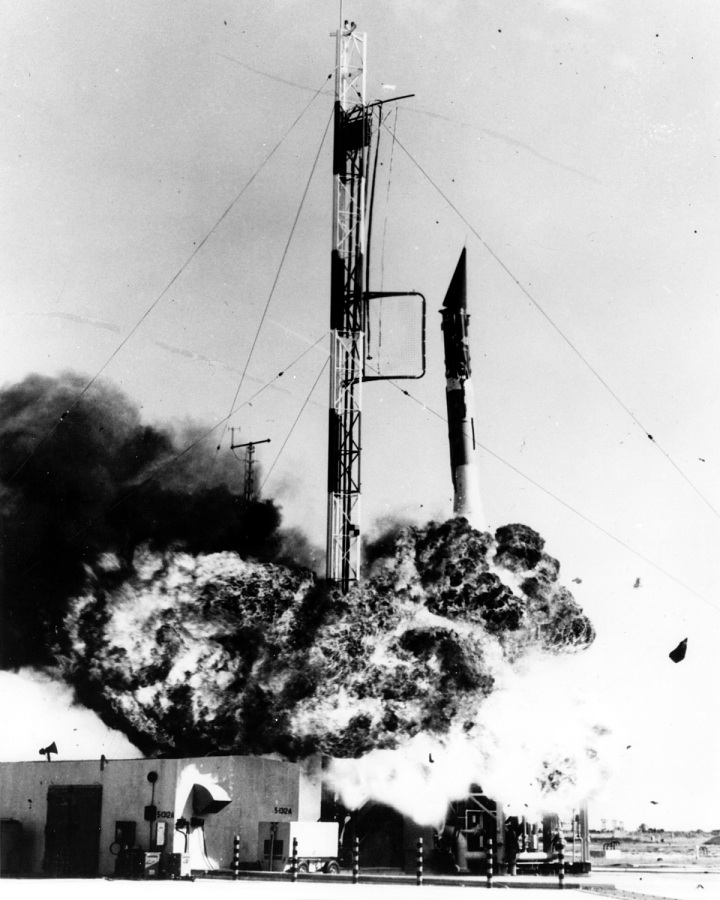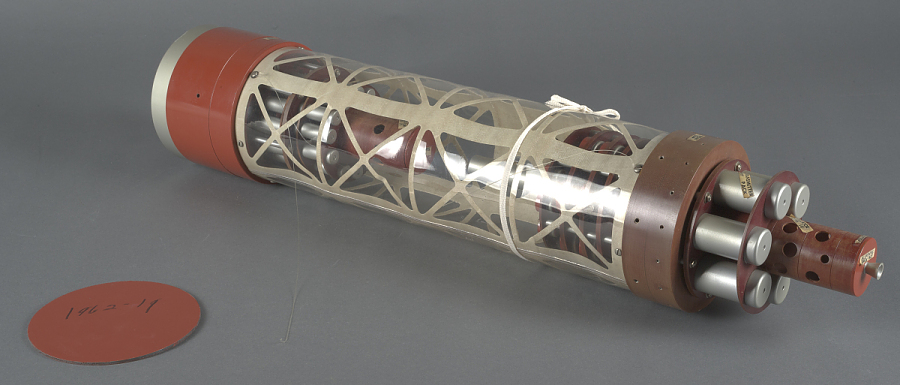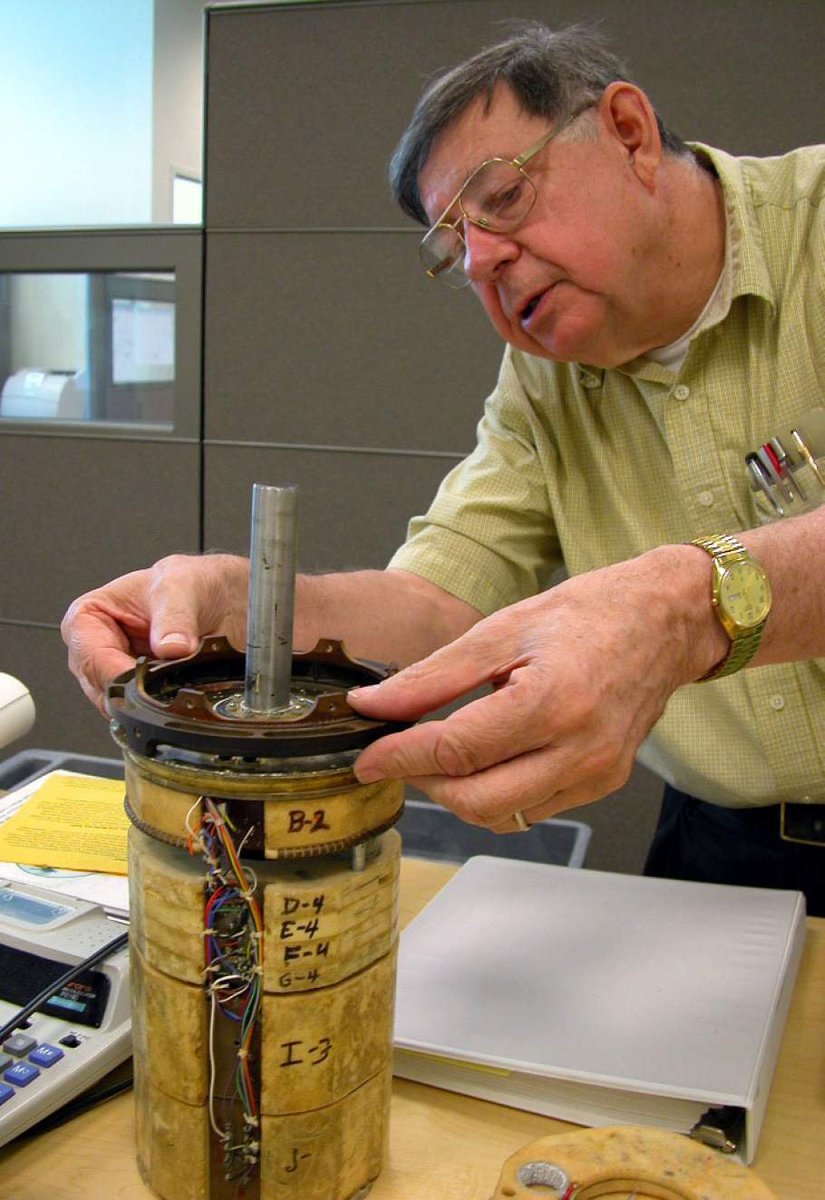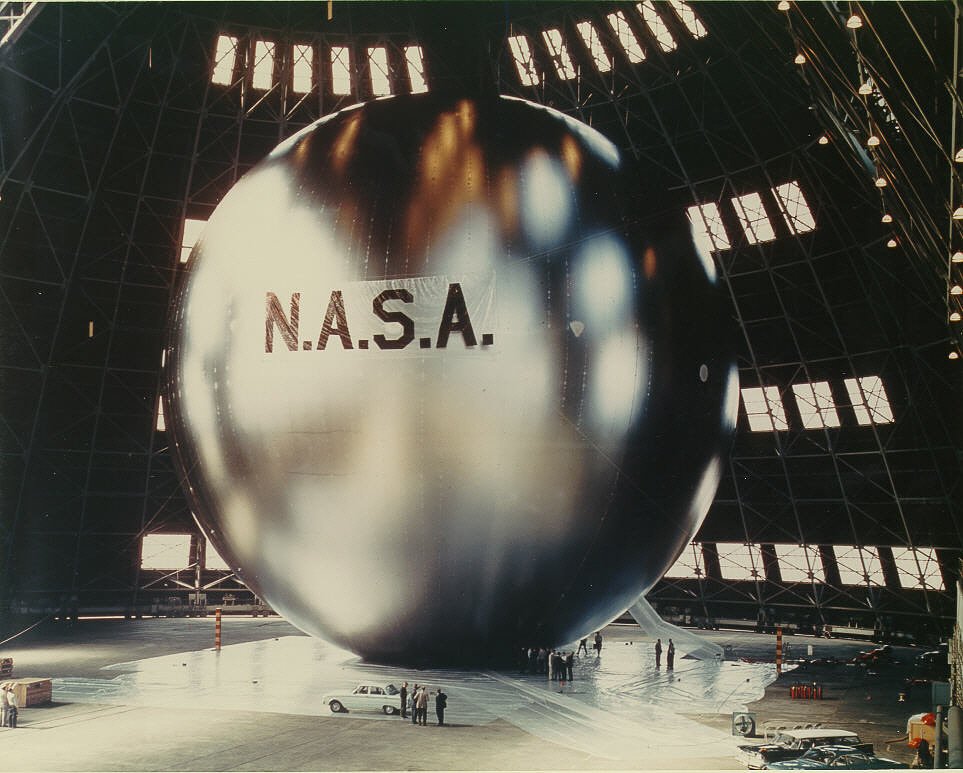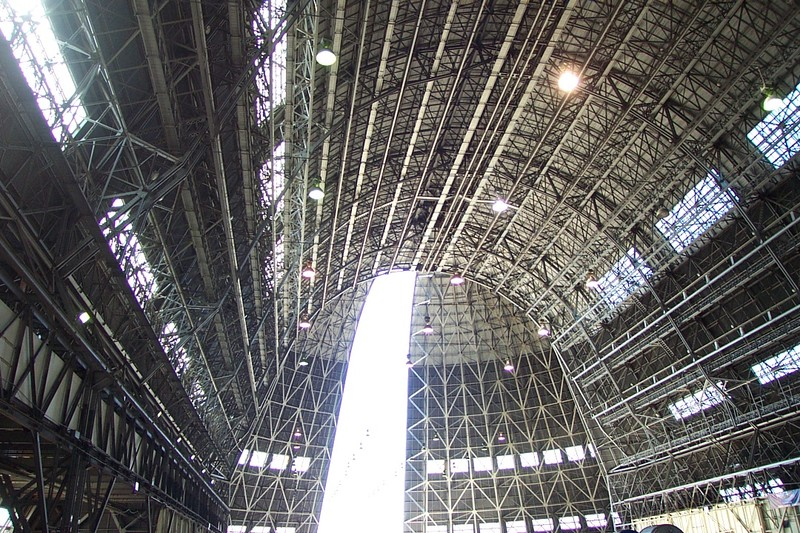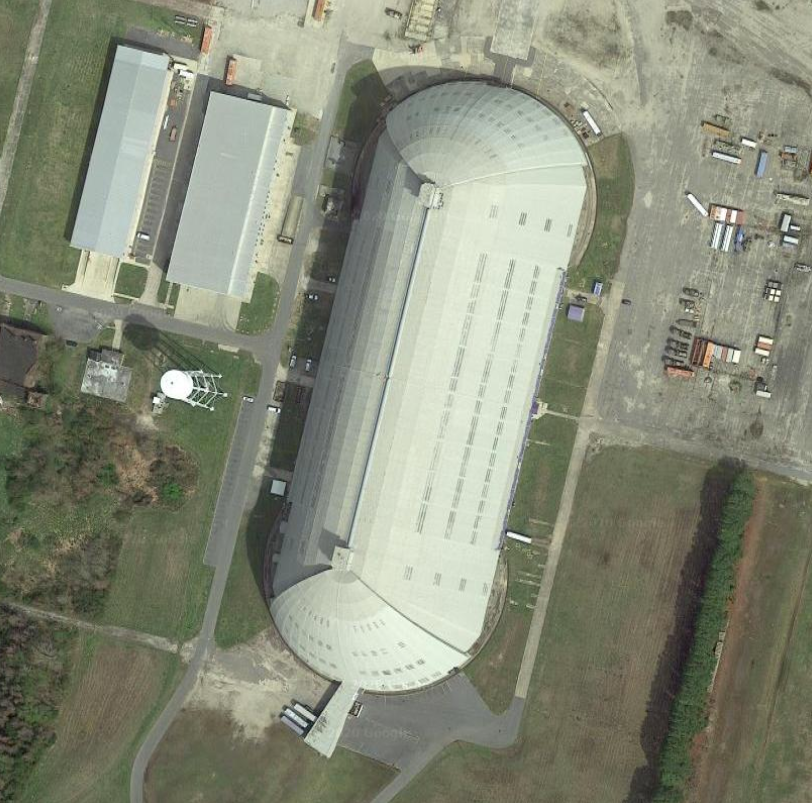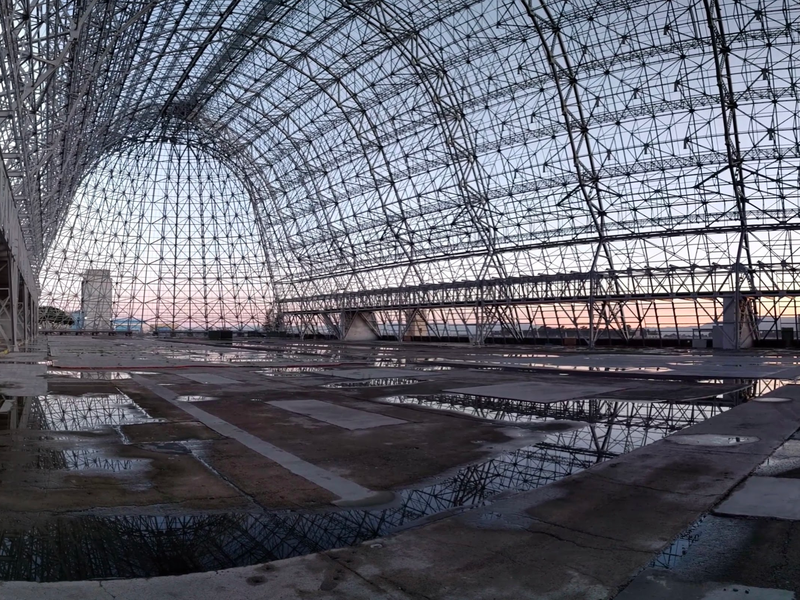here is part of the payload electronics from the Explorer 8 satellite (1960)! look at all the machined phenolic, colorful hand-tied wiring harness, and the stacks of round circuit modules! 

there were apparently two of these columns of electronics. someone's taken apart the second column and we can have a look at some of the modules inside. they are *glorious* 

i was expecting Explorer 8 to look pencil-shaped but it actually has this sort of bulge in the middle. i can't find a diagram showing how the stacked electronics were placed inside.
anyway let's look at the payload in more detail. each module (insulated) has connectors leading to the wiring loom running down the spine.
each module can be very different inside. here's one of them, a 125mW transmitter. each section is isolated from the other using those gold-plated metal RF shield cans.
with the lids removed, you can see how the components inside are arranged on little circuit boards. i see two transistors, can you see them too?
this other module has a neat semicircular array of transistors on the left side. if you go back to the other pic, that might make it easier to pick them out.
i can't make out the part numbers, but these transistors were made by Western Electric, looks like. they would have been very expensive in 1960 (probably hundreds of $)
this other module has grey metal relays hand-wired to the circuit board. the cylindrical metal things with the wide "cap" are liquid tantalum capacitors!
here you can see a tape spool, the pinch roller, and part of the tape path. this was likely a hand-built unit, judging by the tool marks.
serial #3. Raymond Engineering Laboratory was famous for their "Raycorder" line of industrial data tape recorders.
this module is made of transparent plastic, and has cards arranged radially inside. i'm not sure what it does, the middle is hollow. perhaps it is some sort of scientific instrument? perhaps for measuring atmospheric gases?
from this angle you can see that there's something mounted right in the center with a wire leading away from it. 

here's a wiring harness with plugs. the case is made of machined phenolic. i forget what they are called, but those connectors were common in vacuum tube equipment.
there are some more pictures on the web at the Smithsonian's National Air and Space Museum. https://airandspace.si.edu/collection-objects/satellite-explorer-8-payload-components/nasm_A19740877000
anyway the shape would have made sense if this were the Explorer 1. perhaps the electronics were a direct descendent?
it's a far cry from our first (attempted) satellite, the Vanguard 1A. it's banged up because it was thrown clear of the launch vehicle after it exploded on the pad.
basically it's a bunch of junk jammed in a metal shell. parts of it were literally held together by string!
here's the booster blowing up. the failure? the turbo pump didn't get enough pressure fast enough, so burning fuel went up the wrong way through an injector right into the fuel system. boom. at least, that's what they think.
they never figured it out for sure because they didn't have enough time to put adequate telemetry on the rocket.
hard to believe that almost 12 years later we had people walking around on the moon.
oh here are some pics i found of the Explorer 1 payload mockup. the cylinder thingies on the right end are supposed to be batteries, i think.
here's a photo of the Explorer 1 cosmic ray detector. looks very similar to the Explorer 8 packaging! the man is George Ludwig, who designed the instrument.
more details in this article. https://airandspace.si.edu/stories/editorial/missing-history-explorer-1-satellite
i also stumbled on this photo of the Echo satellite. this was a test inflation of the ~100ft reflective sphere. it's a passive satellite with no electronics involved--it just bounces radio waves. the location of the picture looks vaguely familiar.
could it be the inside of Moffett Field's hangar 1? (photo from before it was de-skinned and more or less abandoned)
no, turns out it is the Naval Air Station Weeksville hangar. it looks similar but it was built years after the hangar at Moffett.

 Read on Twitter
Read on Twitter